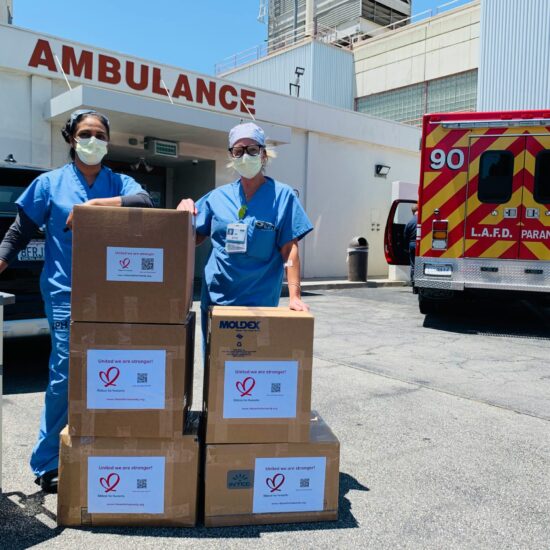 This guest post is written by Rusty Greene, RN, a student in the doctor of nursing practice program at the Hunter–Bellevue School of Nursing in New York City. He was a student last spring in CHMP senior fellow Joy Jacobson’s narrative writing class for graduate nursing students. Names have been changed in this post to protect anonymity.
This guest post is written by Rusty Greene, RN, a student in the doctor of nursing practice program at the Hunter–Bellevue School of Nursing in New York City. He was a student last spring in CHMP senior fellow Joy Jacobson’s narrative writing class for graduate nursing students. Names have been changed in this post to protect anonymity.
Two years ago, I got a tattoo. I never thought it would help someone die.
My right upper arm is covered with a sketch of a seahorse. My uncle and my grandfather have the same tattoo. Both of them were in the navy. They got the tattoo because the seahorse symbolized strength and determination.
I got mine for different reasons. When I was at an aquarium several years ago, I saw the seahorses. They are strange creatures indeed. The males give birth and they are coated in a crusty layer of bone. The wings on their backs flicker like tiny prehistoric appendages. After the fathers give birth, they care for a brood of over 1,000, knowing that more than 950 of them won’t survive.
Seahorses are rugged and resilient. But they also bend the rules of gender. They turn the concept of caring on its head. The concept of “nursing” is not particular to the female of the species.
This is something I understand because I’m a male nurse.
In nursing school, I took many courses on compassion, the empathic response, and palliative care. While I believe anyone is capable of mastering these skills, the tone of these subjects often takes a female perspective. This is particularly true when discussing burnout and fatigue. In fact, the concept of compassion fatigue has been bandied about over the past few years as a very real and uncomfortable condition for nurses and caregivers in general. It is often discussed in the context of having a healthy work/life balance, where a nurse must juggle the demands of caring for strangers only to go home and tend to children, a husband. and a mortgage.
Additionally, when discussing care of the dying, medical literature sometimes goes to the other extreme, providing a sometimes cold and cookie-cutter set of guidelines to help patients “pass.” An Internet search will give you several examples. To combat the sterile nature of these reports, some will say that it is okay to cry with your patients and hold their hand when they are dying. I had a professor in nursing school who said she even climbed into bed with a patient and held her as she died of breast cancer. To me, that seems like a bit too much.
So the messages are mixed. Have compassion but don’t deplete yourself. Follow best practices but tailor them to your own nursing style. Have a big heart but be a man. More often than not, these messages remain muddled. But sometimes, circumstances can create the perfect moment of clarity.
It was Saturday night and Alex was dying of AIDS.
I remember walking in to bathe him near the end of my shift. I entered his room with a basin full of warm water and some liquid soap. As is almost always the case with those who are dying, the room was preternaturally still, as if the air was waiting for the event common to us all but rare in its profundity. Alex was moving on, expiring, “going to the next life.” All of us only get to do it once and it is a singular experience. The atmosphere seems to know this.
I pulled back Alex’s sheets to reveal his frail and failing body. From feet to neck, he was covered in tattoos. They were intricate, colorful designs that swirled on his flesh, dancing this way and that. Then I looked into Alex’s eyes and I saw terror. His “moving on” wasn’t going to be easy. And I had to find a way to comfort him.
I showed him my tattoo and explained its significance. He smiled as best he could and said, “Nice.”
As I was washing his leg, I tentatively asked him about a palm tree and some goldfish drawn on his knee. He explained as best he could about getting that particular tattoo in Florida when he was on vacation with an ex-girlfriend. And at that moment, I saw something soften in his eyes. He went on to describe several more images on his body. A series of stars drawn in Amsterdam on his right shoulder. A black butterfly on his left pectoral muscle that he called “Dark Hope.” The more he shared, the more he relaxed. “Have a good night,” I said softly when I was finished.
“You too,” he said.
Alex died the next day.
Somewhere in between the lectures, the textbooks and the life experience, a space for healing was created. There were no tears. There were no hugs. It was just two guys talking about their tattoos. But it was deeply emotional. I didn’t feel exhausted or distraught or less of a man for caring very deeply about my patient. And Alex finally got some rest.
They say a picture is worth a thousand words. That night they were worth far more than that.









Jim Stubenrauch / November 7, 2014
Hi Rusty, Thanks for writing this post. It’s a great story, beautifully written. Joy and I are discussing it with a group of BESt 4.0 students.
/